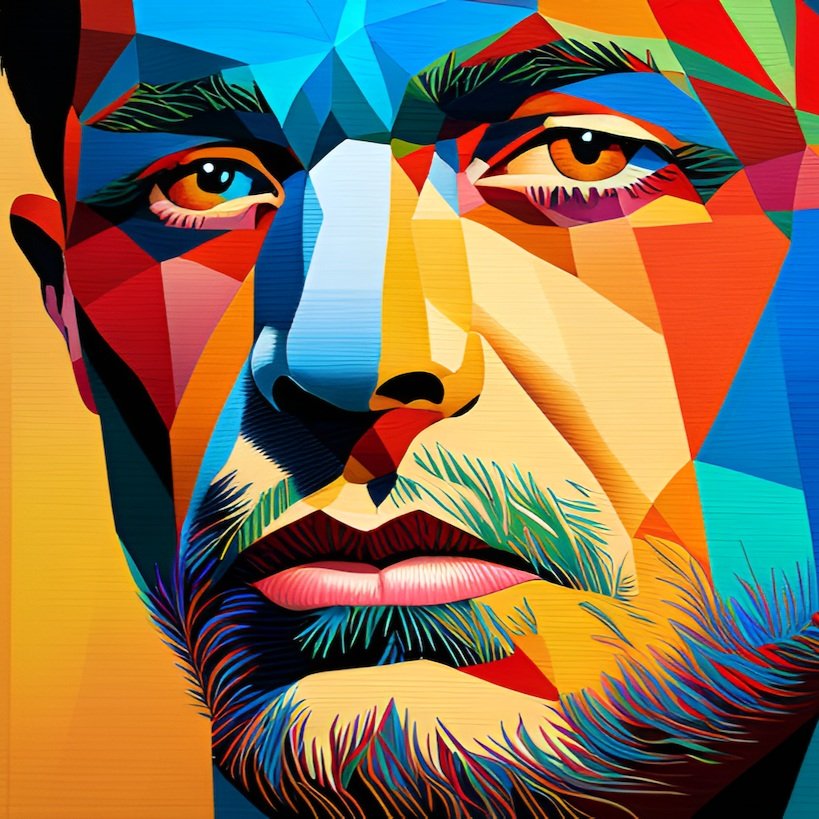Articles from metaphor

The Patterning Instinct and Creativity
Pattern-seeking has been on my mind, partly because it plays a significant role in generative AI, which I’ve also been thinking and writing about. However, I have been reflecting on the impact of patterns on the creative process for longer than I’ve been thinking and writing about generative AI. This is because patterns are also crucial in the creation and appreciation of art.

Reverb: Voices and Vibrations in Generative AI
At this point, it’s somewhat of a cliche to state that generative AI systems serve as a mirror, reflecting our collective cultural heritage. However, the notion that these systems reveal the ideas, patterns, and biases deeply ingrained in our culture is still apt, particularly if you shift your perspective from thinking of generative AI as a reflection of ourselves in a mirror to a different sensory perception—what we hear, which is most often the voice of others. The auditory experiences of echo, reflection, reverberation, and resonance can help us understand the essential question raised by the brief appearance of the persona Sydney in Microsoft’s early preview of Bing Chat: Who is speaking?

Learning How to Un-See
Learning how to think with images begins with learning how to see, or perhaps more accurately, learning how to un-see. Your open eyes are always looking, collecting images and sending them to your brain. And your brain is always processing the images it receives—comparing new images to what you already know and creating connections between different sets of related images and ideas. But most of us rarely stop to think about how we gather, sort, categorize, and group the visual elements that make up the images we’re constantly assembling in our brain.

The Emerging Presence of Digital Thought
Digital content is becoming more and more like thought itself. It exists in a space that is both real and not real, fluid and ever-changing, both ephemeral and permanent. We increasingly interact with our content using tools designed to capture and manipulate our thoughts, but the thoughts themselves are not always fully formed or logical. In other words, we are now thinking with digital information in the same way we think with the thoughts we store in our head.

The Way Forward…
In my last article I explored how the way we visualize the creative problem-solving process has evolved over the last 70 years. The familiar Divergence/Convergence kite model eventually developed into the popular double diamond model that’s still taught in design schools. The FourSight model, a more recent visualization, is popular in education, especially in primary and secondary school settings. Each of these models conveys useful insights into the creative problem-solving process. In this article I introduce you to a new way of visualizing the creative problem-solving process I’ve developed. My Make-to-Know model revolves around a a concept I call “The Maker’s Workshop”—the generative space where your ideas collide, spark, and sometimes fuse. It’s the heart of the creative problem solving process.

Choreographing Creative Thinking
Models and visualizations of the creative thinking/problem-solving process are not just an academic exercise. They are maps that help us communicate with others about creativity and our creative projects. They are also wayfinding tools that help us reorient ourselves when we’ve lost our sense of direction during our creative work. And, they are learning tools that help us improve our creative thinking, planning, and execution.

How to Build Your Toolkit of Mental Models
Mental models help you understand complex problems and make better decisions. They can also limit you: there’s no single model that perfectly explains everything in the universe. You need a toolbox of mental models. This article introduces my Mental Models Workbook as well as some of my favorite websites and books on mental models.

Debug Your Productivity with Systems Thinking
This post introduces “systems thinking” and applies the concept to personal productivity in order to help us develop a better understand two common productivity system issues: a growing backlog of tasks and diminishing output.
